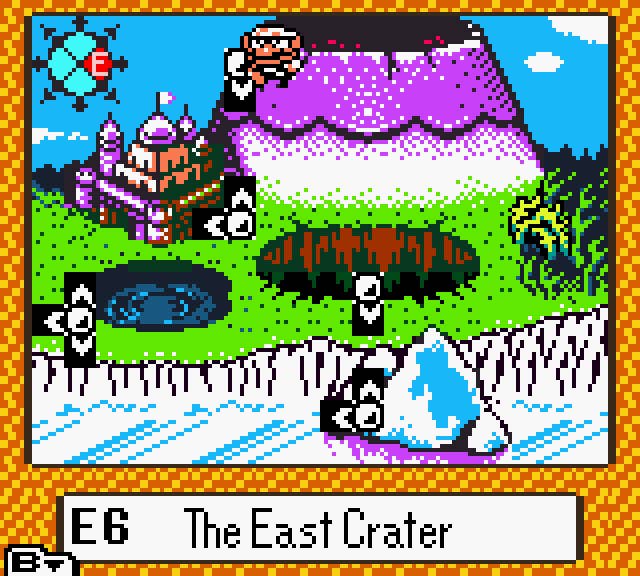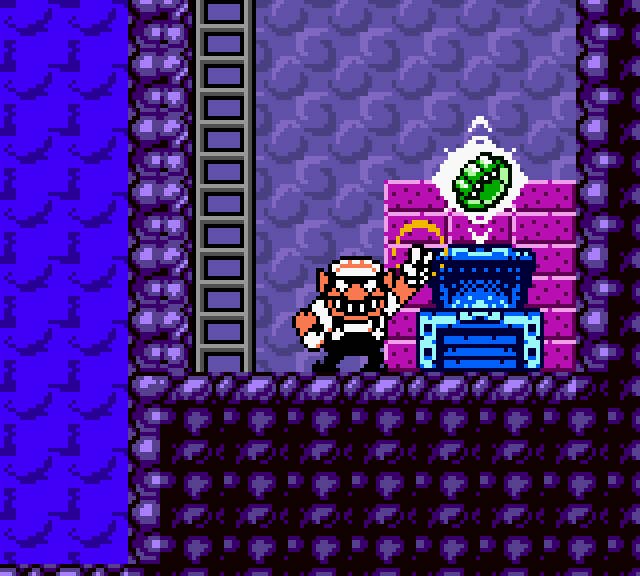Virtual Spotlight: Wario Land 3
Proving once again that innovation is the most sincere form of flatulence.
This article first appeared on USgamer, a partner publication of VG247. Some content, such as this article, has been migrated to VG247 for posterity after USgamer's closure - but it has not been edited or further vetted by the VG247 team.
Something fantastic happened today, at least for those of us who jumped in and adopted the 3DS early, back when it was overpriced and undersupported: At long last, we now have access to the complete Wario Land library on 3DS.
With the addition of Wario Land 3 to the system (joining the first two games on Virtual Console and the Ambassador-exclusive Wario Land 4), the 3DS is now the most Wario-heavy platform in existence. Especially if you factor in the DS games, though why anyone would subject themselves to Master of Disguise when you have access to Wario Land II and 3 on the cheap is beyond me.
The Wario Land games remain some of Nintendo's most grossly underappreciated gems, top-tier creations for platforms few serious gamers paid attention to in an era when the rush to 3D graphics made classic platformers deeply unpopular. But now that retro-style visuals and quirky, Metroid-like game design is all the rage among indie designers, it's time for true fans of the medium to step back and gain a better appreciation for just how great the Wario games were -- and, in fact, are. Ignore the limitations imposed by its Game Boy Color origins, because Wario Land III is a master class in genius game design.

First, you need to understand that Wario Land 3, like its predecessors, was created in the shadow of the Mario series by what appears to be a group of designers who grumpily resented that franchise's golden-child status. Wario began as a grotesque mockery of Mario, and once he became the star of his own games, those adventures took on a similar personality. If Mario established the rules of platform games, Wario broke them at every opportunity.
Wario Land 3 also shows definite signs of its creators' own heritage as well; some of the staff involved in this weird little adventure had previously worked on the Metroid series. While Nintendo let that particular franchise lay fallow for nearly a decade, the Wario games offered those designers their own outlet for creating exploration-based platformers until they were finally allowed to make Metroid Fusion. (One assumes their only outlet in these dark days of no Metroid or Wario amounts to frustrated wailing in their private hours, or perhaps orchestrating campaigns to lower the customer ratings of the Mario games on Amazon Japan.)

Combine that classic free-roaming, backtrack-friendly design with the odd rules of the Wario series and you end up with a huge, ambitious, and decidedly unconventional adventure. As in Wario Land II, the hero is indestructible here: He has no health meter nor stock of lives. You can't die. You can't lose.
But indestructible does not mean the same thing as invincible, and Wario's vulnerabilities serve as the central play mechanic. Like Wile E. Coyote, Wario can be bent, spindled, and mutilated; he can be crushed, burned, flattened, and even zombified. And when afflicted with such disadvantageous circumstances, Wario lives up to his comical villain heritage and makes the best of things anyway.

Flatten Wario and he'll skitter into narrow spaces. Burn him and he'll break through flammable blocks as he dashes in a blazing panic. Transform him into a zombie and he'll... uh... be a zombie. Each and every status Wario can suffer offers both advantages and downsides, and every level is constructed in a way that challenges you to mess the guy up in the proper way and make further progress without stumbling across a cure for his conditions too soon.
Along the way, Wario acquires more permanent upgrades to go along with these temporary afflictions, growing ever more capable as an explorer and fighter, which of course allows him to revisit conquered territory and uncover alternate routes and treasures. Wario Land 3 came out in the midst of the 32- and 64-bit obsession with collect-a-thon platformers, and your goal here is not surprisingly to acquire 100% of the various baubles hidden throughout the world. But the way you go about it is far more interesting than "jump and run everywhere and keep tilting the camera to make sure you found the doodads lazily scattered about."
If Wario Land 3 has a flaw, it's that it may be a little too ambitious for its own good. The levels can sprawl, and some of the puzzles can be maddeningly complex, which can leave you feeling stuck in a rut at times. Still, it's a minor complaint, and if Wario Land 3 lacks the less-cluttered design of its predecessor and sequel, it excels in exploring this franchise's twisted subversion of the standard 2D platformer to its utmost limit.
ConclusionThere are some damn fine indie games cut from this retro-exploration-platformer-adventure cloth these days, but Wario Land III's brilliance holds up a decade and a half later to stand toe-to-toe with the best of them.
